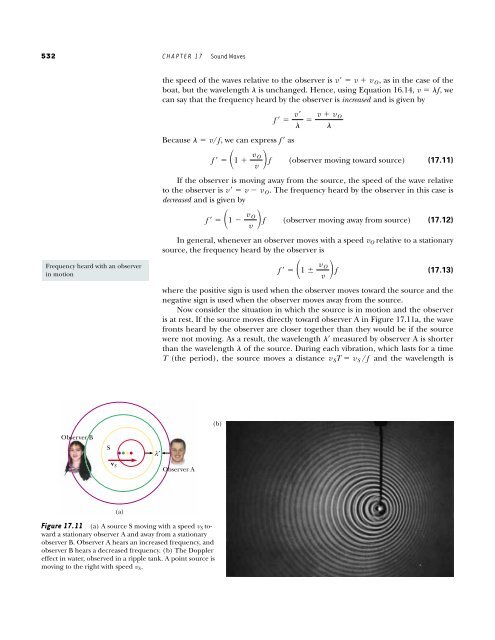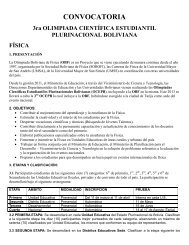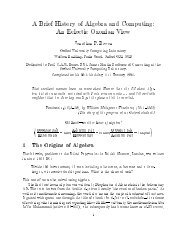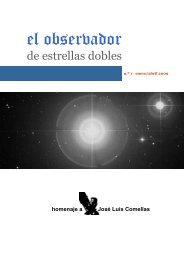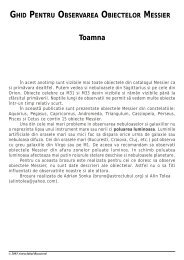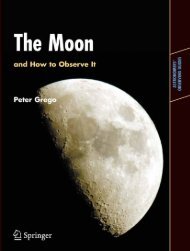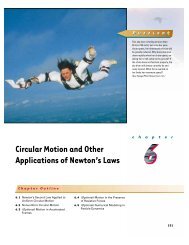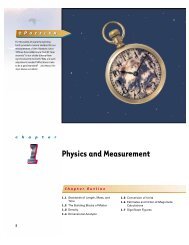Create successful ePaper yourself
Turn your PDF publications into a flip-book with our unique Google optimized e-Paper software.
532 CHAPTER 17 <strong>Sound</strong> <strong>Waves</strong><br />
Frequency heard with an observer<br />
in motion<br />
Observer B<br />
S<br />
v S<br />
(a)<br />
λ′ λ<br />
the speed <strong>of</strong> the waves relative to the observer is v� �v � v O , as in the case <strong>of</strong> the<br />
boat, but the wavelength � is unchanged. Hence, using Equation 16.14, v � �f, we<br />
can say that the frequency heard by the observer is increased and is given by<br />
� � v/f,<br />
f �� v�<br />
Because we can express f � as<br />
� � v � v �<br />
O<br />
f ��� (observer moving toward source) (17.11)<br />
If the observer is moving away from the source, the speed <strong>of</strong> the wave relative<br />
to the observer is v� �v � v O . The frequency heard by the observer in this case is<br />
decreased and is given by<br />
1 � v O<br />
v � f<br />
f ��� (observer moving away from source) (17.12)<br />
In general, whenever an observer moves with a speed vO relative to a stationary<br />
source, the frequency heard by the observer is<br />
1 � v O<br />
v � f<br />
f ��� (17.13)<br />
where the positive sign is used when the observer moves toward the source and the<br />
negative sign is used when the observer moves away from the source.<br />
Now consider the situation in which the source is in motion and the observer<br />
is at rest. If the source moves directly toward observer A in Figure 17.11a, the wave<br />
fronts heard by the observer are closer together than they would be if the source<br />
were not moving. As a result, the wavelength �� measured by observer A is shorter<br />
than the wavelength � <strong>of</strong> the source. During each vibration, which lasts for a time<br />
T (the period), the source moves a distance v ST � v S /f and the wavelength is<br />
1 � v O<br />
v � f<br />
Observer A<br />
Figure 17.11 (a) A source S moving with a speed v S toward<br />
a stationary observer A and away from a stationary<br />
observer B. Observer A hears an increased frequency, and<br />
observer B hears a decreased frequency. (b) The Doppler<br />
effect in water, observed in a ripple tank. A point source is<br />
moving to the right with speed v S.<br />
(b)


